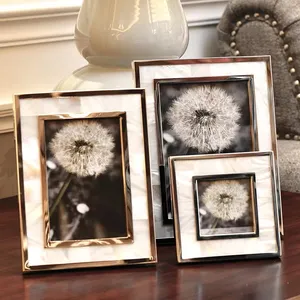Introduction
Welcome to the world of ceramic frames, where artistry meets functionality. This buyer's guide will take you on a journey through the history, evolution, and artistic elegance of ceramic frames. We'll delve into the different types and styles, the influence of various art movements, and the unique design elements and techniques used in their creation. Whether you're an art enthusiast, a collector, or simply someone looking for a unique way to frame your cherished memories, this guide will provide you with a comprehensive understanding of ceramic frames and help you make an informed purchase decision.
Understanding Ceramic Frames
Ceramic frames, like other ceramic products, are made from highly refined raw materials, exhibiting hardness, excellent heat and corrosion resistance, and electrical insulation properties. The physical differences between ceramics and Fine Ceramics, which ceramic frames often fall under, arise from their raw materials and manufacturing processes. Fine Ceramics are manufactured using highly purified natural raw materials, artificial raw materials synthesized through chemical processes, and other non-naturally occurring compounds. These compounded raw materials turn into high-value-added products with excellent dimensional accuracy and functional characteristics through a series of precisely controlled, complex processes such as forming, machining, firing, and grinding.
History and Evolution of Ceramic Frames
Ceramic frames, like their counterparts, have a rich history dating back to ancient times. Originally, frames were not separate from the artwork they enclosed, but were incorporated into it. The evolution of frames as we know them today began in 12th and 13th century Europe, appearing as carved, wooden structures separate from the artwork. The Italian Renaissance marked the rise of more secular art and the advent of the portable frame. Over the centuries, framing styles and techniques evolved, leading to the diverse range of frames we see today, including ceramic frames.
Types and Styles of Ceramic Frames
Handmade ceramic frames are a testament to timeless craftsmanship. Inspired by the decorations painted on ceramics in the 16th century, each frame features a unique form or color combination, allowing you to choose the one that best fits your style. Frame your favorite memories in these exquisite pieces of artistry.
The Artistic Elegance of Ceramic Frames
Handcrafted ceramic frames are a testament to the artistic elegance of ceramic frames. Reminiscent of the decorations painted on ceramics in the 16th century, each frame, with its unique form and color combination, is a timeless piece of craftsmanship. Choose a frame that complements your style and immortalize your cherished memories within its bounds.
Design Elements and Techniques
Ceramic frames, like other ceramic art forms, can be created using various techniques. Handbuilding, a method involving shaping and forming clay with hands, is a common technique. It can involve pinching, joining slabs, or creating coils. Another technique is slab construction, where flat pieces of clay are cut into shapes and joined to form an object. Coil construction involves rolling out soft clay into long, thick strips and layering them. Lastly, wheel throwing or hand throwing, a technique that involves the use of a potter's wheel, allows for the creation of more refined pieces. Each technique offers unique design elements to ceramic frames.
Influence of Various Art Movements
Ceramic frames have been influenced by various art movements. For instance, the classic blue and white pottery that originated in Asia in the 14th century has inspired contemporary artists. These artists have repurposed the iconic blue-and-white motif for a modern audience. Similarly, artists have used ceramics to portray fully realized characters, demonstrating a depth of feeling. These influences show how ceramic frames have evolved and adapted over time, incorporating elements from different art movements.
Buying Guide for Ceramic Frames
When buying our ceramic picture frames, you'll find they are unfinished, ready for your personal touch. They are available individually or in economical cases for those looking to resell. We ensure affordability by using efficient shipping methods for daily shipping and larger orders, significantly reducing freight costs. This makes your purchase more cost-effective, especially for resale purposes.
Factors to Consider When Buying
When buying ceramic frames, one of the key factors to consider is the finish. The ceramic frames offered on Alibaba are unfinished, providing you the freedom to paint them as per your preference. These frames are available individually or in economical cases. Another crucial factor is the shipping method. Alibaba ensures affordability by using efficient shipping methods for daily shipping and larger orders, significantly reducing freight costs. This makes your purchase more cost-effective, especially if you're considering resale.
Where to Buy Authentic Ceramic Frames
When looking to buy authentic ceramic frames, consider exploring Alibaba's vast online platform. Alibaba offers a wide variety of styles and finishes, affordable options, unique, vintage, and customized frames, and a more eclectic collection. Alibaba's vast selection caters to all styles and budgets. Remember to check the shipping and return policies before making a purchase.
Maintaining Your Ceramic Frames
Proper care for your ceramic frames is a game-changer for maintenance. A quality ceramic frame coating, applicable to both gloss and matte finishes, repels dirt, mud, water, and more, making cleaning and upkeep quicker and simpler. The coating is extremely hydrophobic, causing contaminants to slide off swiftly. It's a semi-permanent solution, outlasting traditional waxes and sealants, and it enhances the color depth on matte finishes. The application process can be done professionally or personally, with the latter requiring careful attention to smaller parts.
Cleaning and Preservation Tips
Maintaining the pristine condition of your ceramic frames is crucial. To clean, use a slightly damp cloth as needed and wipe it dry. Avoid using abrasive cleaners, chemical solvents, strong detergents, cleaners with bleach, and furniture polish as these can damage the ceramic surface. Despite the durability of ceramic frames, we recommend the use of trivets, coasters, placemats, and adhesive felt pads to help prevent scratches. This way, you can ensure the longevity and beauty of your ceramic frames.
Repair and Restoration Advice
Restoring ceramic frames requires expertise and care. Professionals can repair a wide range of materials including pottery, ceramic, porcelain, and others. Different levels of repair are available, from high-end restoration to more affordable options. When pieces are missing, experts can match the ceramic material and restore the original look. They can even sculpt missing pieces, reproducing them from clay and firing them in a kiln to ensure uniformity of materials and retain the item's value. Satisfaction is usually guaranteed, and pricing varies depending on the complexity of the repair.
Conclusion
Ceramic frames, with their rich history and diverse styles, offer a unique blend of artistry and functionality. From the timeless craftsmanship of handmade ceramic frames to the influence of various art movements, these frames are more than just decorative items; they are pieces of art in their own right. When buying ceramic frames, consider factors such as finish, shipping methods, and where to buy authentic pieces. Maintenance, including cleaning, preservation, and restoration, is also crucial to ensure their longevity. Whether you're looking to add a touch of elegance to your home or office, or seeking a unique gift, ceramic frames offer a timeless appeal that transcends trends.








































 浙公网安备 33010002000092号
浙公网安备 33010002000092号 浙B2-20120091-4
浙B2-20120091-4